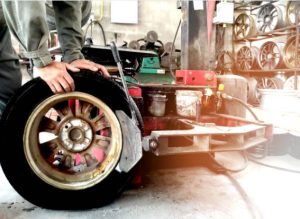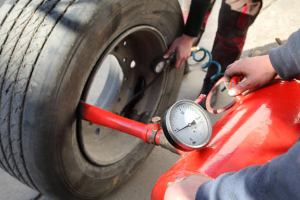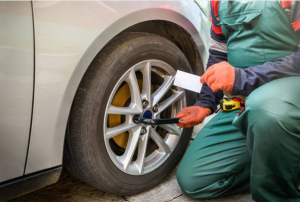If you have a high-mileage vehicle, proper tire care is essential for its longevity and performance. For those looking for cost-effective solutions, considering free used tires can be a smart choice. This article provides valuable tips on maintaining your tires effectively to maximize their lifespan and ensure your high-mileage vehicle runs smoothly. Regularly checking tire pressure is crucial, as high-mileage vehicles are prone to air leaks, impacting performance and fuel efficiency. Rotating your tires regularly distributes wear evenly, extending their lifespan and improving traction. These simple tire maintenance steps ensure your high-mileage vehicle remains safe and comfortable on the road for years to come.
Common Tire Maintenance Tips
If you have a high-mileage vehicle, there are key tire maintenance tips you should keep in mind. Regular tire rotation is important to ensure even wear and extend the life of your tires.

Ensure also to check your tire pressure regularly to maintain optimal performance and fuel efficiency.
Lastly, don’t forget about wheel alignment; this can help prevent uneven tire wear and improve overall handling and safety.
Regular Tire Rotation
Regular tire rotation helps to evenly distribute the wear and tear on your high-mileage vehicle’s tires, ensuring a smoother and safer ride. As you drive your vehicle, the weight distribution and weight transfer can cause the front tires to wear out faster than the rear ones. By regularly rotating your tires, you can prevent this uneven wear and extend the lifespan of your tires.
During a tire rotation, the front and rear tires are switched from one side to the other and from front to back. This allows the tires to wear down more evenly, as each tire will experience different forces and pressures. Tire rotation can also help maintain proper traction and handling, especially on wet or slippery roads. Regularly rotating your tires can maximize their performance and ensure a safer driving experience for yourself and your passengers.
Tire Pressure Check
Don’t forget to regularly check your tire pressure to ensure a smooth and enjoyable ride.
Maintaining the proper tire pressure is crucial for your high-mileage vehicle. When your tires are properly inflated, it not only enhances your vehicle’s performance but also improves fuel efficiency.
Underinflated tires can lead to increased rolling resistance, so your engine must work harder and consume more fuel. overinflated tires can cause uneven tread wear and reduce traction, making it dangerous to drive on wet or slippery roads.
By checking your tire pressure regularly, you can prevent these issues and save money on fuel expenses.
Checking your tire pressure is a simple task that you can easily do at home or a gas station. Start by finding the recommended tire pressure for your vehicle in the owner’s manual or on the sticker on the driver’s side door jamb.
Use a tire pressure gauge to measure the air pressure in each tire, including the spare. If the pressure is too low, add air until it reaches the recommended level. If the pressure is too high, release air until it reaches the appropriate level.
Remember to check the tire pressure when the tires are cold, as heat can cause the air inside to expand and give inaccurate readings.
By making tire pressure checks a regular part of your maintenance routine, you can ensure a safer and more comfortable driving experience with your high-mileage vehicle.
Wheel Alignment
Ensure your wheels are correctly aligned to ensure a smooth and stable ride. Wheel alignment refers to adjusting the angles of your vehicle’s wheels to be parallel and perpendicular to the ground.
Over time, the wheels of high-mileage vehicles can become misaligned due to various factors such as hitting potholes, driving on rough roads, or even normal wear and tear. When your wheels are out of alignment, it can result in uneven tire wear, decreased fuel efficiency, and poor handling. Therefore, it’s essential to have your wheels aligned regularly.
Getting your wheels aligned is a relatively simple and quick process that can be done at most automotive service centers. During the alignment, a technician will use specialized equipment to measure the angles of your wheels and make the necessary adjustments to bring them back into proper alignment.
This will help distribute the weight of your vehicle evenly across all four tires, ensuring optimal contact with the road surface. By maintaining proper wheel alignment, you can extend the lifespan of your tires, improve fuel efficiency, and enhance the overall performance and safety of your high-mileage vehicle.
So, please don’t overlook this critical aspect of tire maintenance and make it a regular part of your vehicle’s upkeep routine.
Recommended Posts: Tire Buying Guide: Factors to Consider
Benefits Of Tire Maintenance
If you take care of your tires, you can enjoy several benefits. First, regular tire maintenance can improve your fuel economy. Properly inflating your tires can reduce rolling resistance and save on gas.

Additionally, maintaining your tires can enhance traction, giving you better control and stability on the road.
Lastly, taking care of your tires can help extend their lifespan, saving you money in the long run.
Improved Fuel Economy
You can easily boost your fuel economy by following these simple tire maintenance tips for high-mileage vehicles. The first step is to check your tire pressure regularly. Under-inflated tires can decrease fuel efficiency by causing more resistance on the road. You can reduce rolling resistance and improve fuel economy by keeping your tires properly inflated.
It’s recommended to check your tire pressure at least once a month and before long trips.
Another important tip is to rotate your tires regularly. High-mileage vehicles wear tires unevenly, especially if they’re not rotated regularly. By rotating your tires every 6,000 to 8,000 miles, you can ensure that they wear evenly and last longer. This can help improve fuel economy by maintaining optimal traction and reducing the drag caused by worn-out tires.
Don’t forget to regularly inspect your tires for any signs of damage or excessive wear, and replace them if necessary.
Following these tire maintenance tips can maximize your fuel efficiency and save money at the pump.
Enhanced Traction
To boost your driving experience, ensuring enhanced traction is crucial. As your vehicle accumulates high mileage, the condition of your tires becomes even more important. Worn-out tires can significantly affect your vehicle’s ability to grip the road, especially in wet or snowy conditions.
To enhance traction, it’s vital to regularly check your tire tread depth and replace your tires when they become worn. This will ensure your tires have enough grip to maintain control and stability, reducing the risk of skidding or sliding.
Proper tire inflation is essential for enhanced traction. Underinflated tires have a larger contact patch with the road, which can lead to decreased traction and increased rolling resistance. Overinflated tires can reduce the amount of tire surface in contact with the road, resulting in reduced traction.
To optimize traction, it’s crucial to maintain the recommended tire pressure specified by the vehicle manufacturer. Regularly checking your tire pressure and inflating or deflating them as needed will help ensure you have the right traction for safe and efficient driving.
By prioritizing enhanced traction through regular tire maintenance, you can enjoy a smoother and more confident driving experience, regardless of the mileage on your vehicle.
Longer Tire life
Maximizing the lifespan of your tires is essential for getting the most out of your driving experience. When it comes to high-mileage vehicles, tire longevity becomes even more important. Thankfully, there are several steps you can take to ensure that your tires last as long as possible.
Firstly, regular tire rotations are crucial for extending their lifespan. By rotating your tires every 5,000 to 8,000 miles, you can distribute the wear more evenly across all four tires. This helps prevent uneven tread wear and extends the life of your tires.
Proper tire inflation is key. Underinflated tires can cause excessive heat buildup and wear on the edges, while overinflated tires can lead to uneven wear in the center. By checking your tire pressure regularly and inflating them to the recommended levels, you can significantly increase their longevity.
These simple steps will save you money in the long run and enhance your safety on the road.
Maximizing the lifespan of your tires is crucial for high-mileage vehicles. Regular tire rotations and proper inflation are two key factors in extending the life of your tires. By following these simple guidelines, you can enjoy a longer tire life, saving money and ensuring a safer driving experience.
So, prioritize tire maintenance and reap the benefits of improved longevity and performance.
Specific Tips For High Mileage Vehicles
When it comes to high mileage vehicles, specific tips can help you maintain your tires. First, choose tires with increased tread life to ensure they last longer.

Second, consider tire balancing to improve your tires’ overall performance and longevity.
Lastly, regularly inspect your tires for uneven wear, as this can indicate alignment issues or other problems that need to be addressed.
By following these tips, you can ensure the longevity and safety of your tires on your high-mileage vehicle.
Choose Tires With Increased Tread life
Get longer-lasting tires for your high-mileage vehicle and experience the peace of mind knowing that you’re getting the most out of your investment.
When choosing tires for your high-mileage vehicle, it’s important to prioritize tread life. Look for tires designed to provide increased tread life, as these will endure the wear and tear of long-distance driving. These tires are made with a harder rubber compound that is more resistant to abrasion and can withstand high mileage.
By opting for tires with increased tread life, you can prolong the life of your tires and avoid frequent replacements, saving you time and money in the long run.
In addition to choosing tires with increased tread life, it’s also crucial to regularly monitor and maintain your tire pressure. Proper tire inflation not only improves fuel efficiency but also enhances the longevity of your tires. Overinflated or underinflated tires can lead to uneven wear, reducing tread life and compromising performance.
Make it a habit to check your tire pressure at least once a month and adjust it according to the manufacturer’s recommendations. Keeping your tires properly inflated ensures that they wear evenly and last longer, providing you with a safer and more cost-effective driving experience.
Remember, investing in tires with increased tread life and maintaining proper tire pressure are key steps in maximizing the longevity of your high-mileage vehicle’s tires.
Further Reading: All About Tire Tread Patterns and Their Effects
Consider Tire Balancing
Considering tire balancing can significantly improve the performance and durability of your vehicle’s tires, ensuring a smoother and more enjoyable driving experience.
Tire balancing is equalizing the weight distribution of a tire and wheel assembly. Over time, tires can become imbalanced due to uneven wear, leading to vibrations, poor handling, and even premature tire wear. By balancing your tires, you can eliminate these issues and extend the lifespan of your tires.
Tire balancing is crucial for high-mileage vehicles because they’re more prone to uneven tire wear. As you drive, tires can wear down unevenly, causing certain areas of the tire to become heavier than others. This imbalance can result in vibrations that can be felt in the steering wheel or throughout the vehicle.
Having your tires balanced regularly ensures the weight distribution is even and eliminates these vibrations. This not only improves the comfort of your ride but also reduces the strain on other components of your vehicle, such as the suspension and steering system.
So, don’t overlook the importance of tire balancing as part of your tire maintenance routine for your high-mileage vehicle.
Inspect Tires For Uneven Wear
Take a moment to examine your tires for any signs of uneven wear. Uneven wear can indicate that your tires aren’t properly aligned or balanced, which can lead to a bumpy ride and decrease the lifespan of your tires.
Look for any areas of the tire that appear more worn down than others, such as one side of the tire or the center. You notice that the tread pattern isn’t consistent across the entire tire. These are all signs that your tires need to be balanced or aligned.
If you notice any signs of uneven wear, it’s essential to address the issue immediately. Ignoring it can further damage your tires and unsafe driving conditions.
Take your vehicle to a trusted mechanic or tire specialist who can properly inspect and diagnose the problem. They’ll be able to determine if your tires need to be balanced, aligned, or if there’s another underlying issue causing the uneven wear.
By addressing this issue promptly, you can ensure that your tires are in the best condition possible, which will not only improve your vehicle’s performance but also your safety on the road.
Conclusion
In conclusion, proper tire care is essential for high-mileage vehicles. Regularly checking tire pressure, rotating tires, and monitoring wear and tear extends their lifespan and improves safety. These practices also enhance fuel efficiency and handling while reducing accident risks. High-mileage vehicles require specific attention, including checking tread depth, timely tire replacement, and wheel alignment. By following these guidelines, you can ensure a smoother and safer driving experience while extending the life of your tires. Don’t underestimate the importance of tire maintenance for older vehicles; it’s a small effort with significant benefits.
